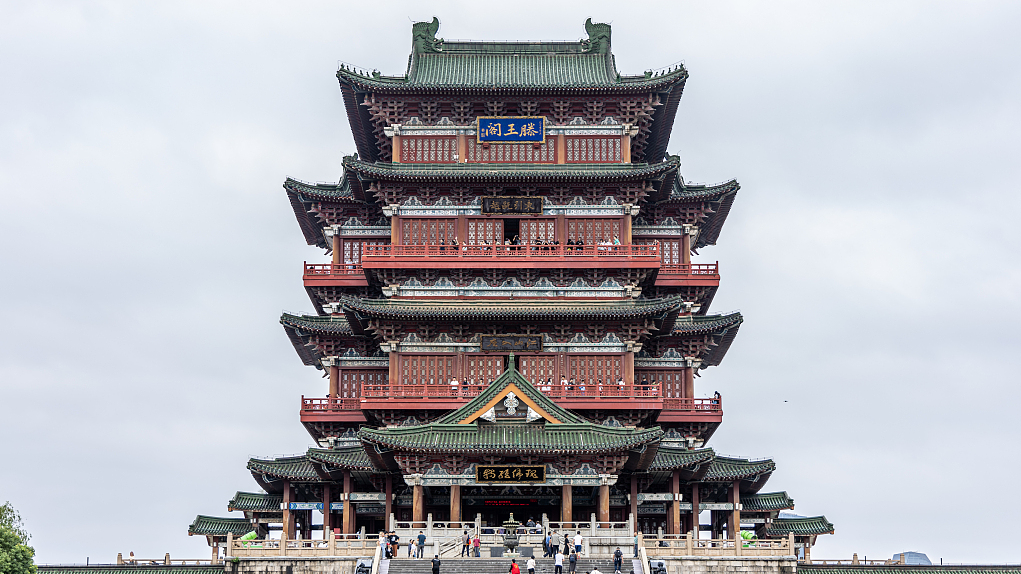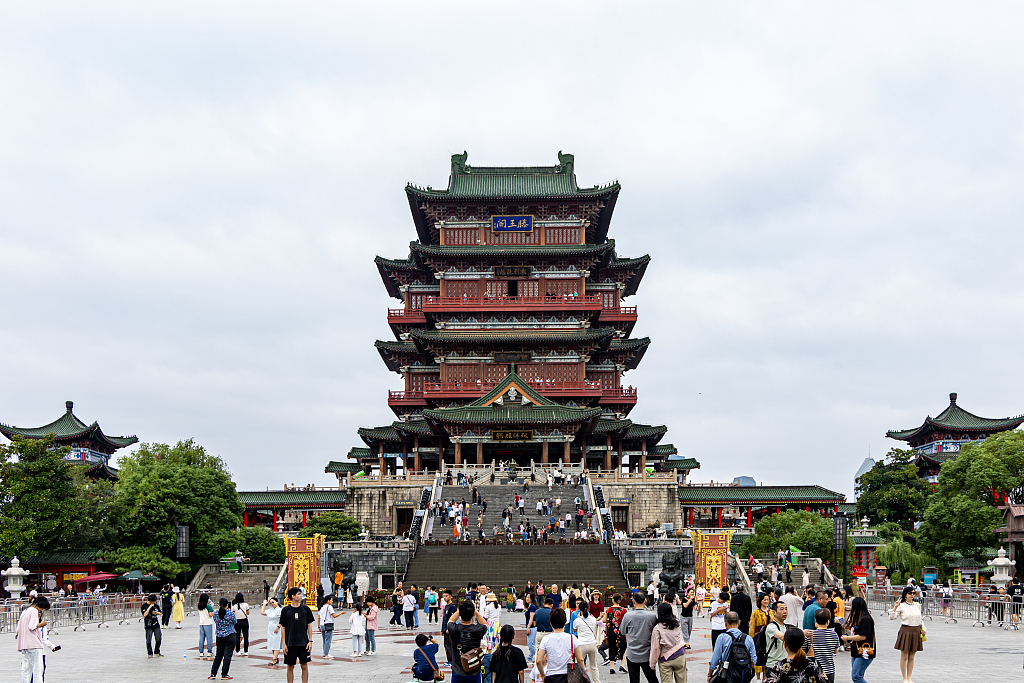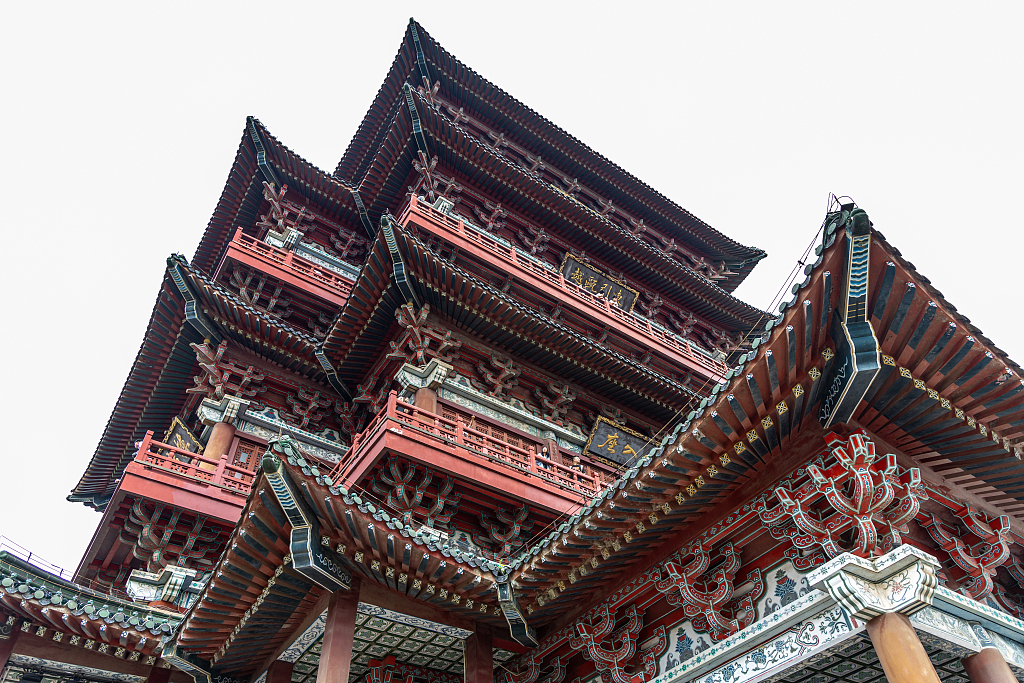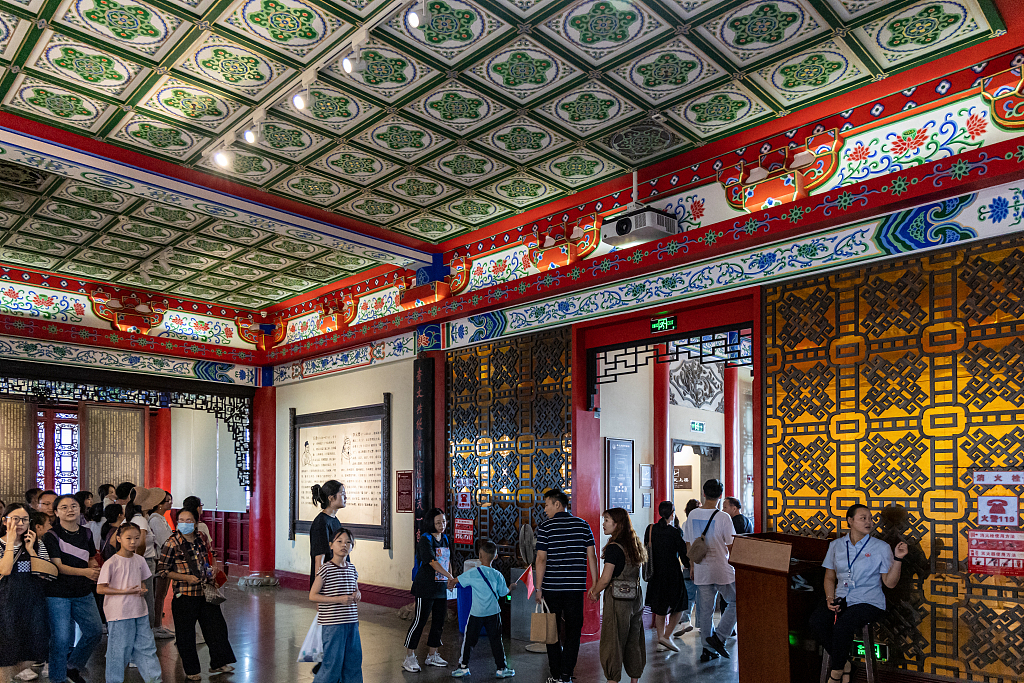
A photo taken on October 2, 2023 shows the Pavilion of Prince Teng in Nanchang, Jiangxi Province, China. /CFP
A photo taken on October 2, 2023 shows the Pavilion of Prince Teng in Nanchang, Jiangxi Province, China. /CFP

A photo taken on October 2, 2023 shows visitors outside the Pavilion of Prince Teng in Nanchang, Jiangxi Province, China. /CFP
A photo taken on October 2, 2023 shows visitors outside the Pavilion of Prince Teng in Nanchang, Jiangxi Province, China. /CFP

A photo taken on October 2, 2023 shows a detail of the exterior of the Pavilion of Prince Teng in Nanchang, Jiangxi Province, China. /CFP
A photo taken on October 2, 2023 shows a detail of the exterior of the Pavilion of Prince Teng in Nanchang, Jiangxi Province, China. /CFP

A photo taken on October 2, 2023 shows visitors inside the Pavilion of Prince Teng in Nanchang, Jiangxi Province, China. /CFP
A photo taken on October 2, 2023 shows visitors inside the Pavilion of Prince Teng in Nanchang, Jiangxi Province, China. /CFP
Located in the northwestern part of Nanchang, the capital city of Jiangxi province in eastern China, Tengwang Pavilion, also known as the Pavilion of Prince Teng, is an imperial structure originally constructed in the year 653 by Li Yuanying. Li Yuanying was the son of Li Yuan, who served as the first emperor of the Tang Dynasty. During the reign of Emperor Zhenguan (627-649), Yuanying received the title "Prince Teng," and hence, the pavilion was named "Tengwang Pavilion." Alongside Hubei province's Yellow Crane Tower in Wuhan and Hunan province's Yueyang Pavilion, Tengwang Pavilion is one of the "Three Great Pavilions" of China.